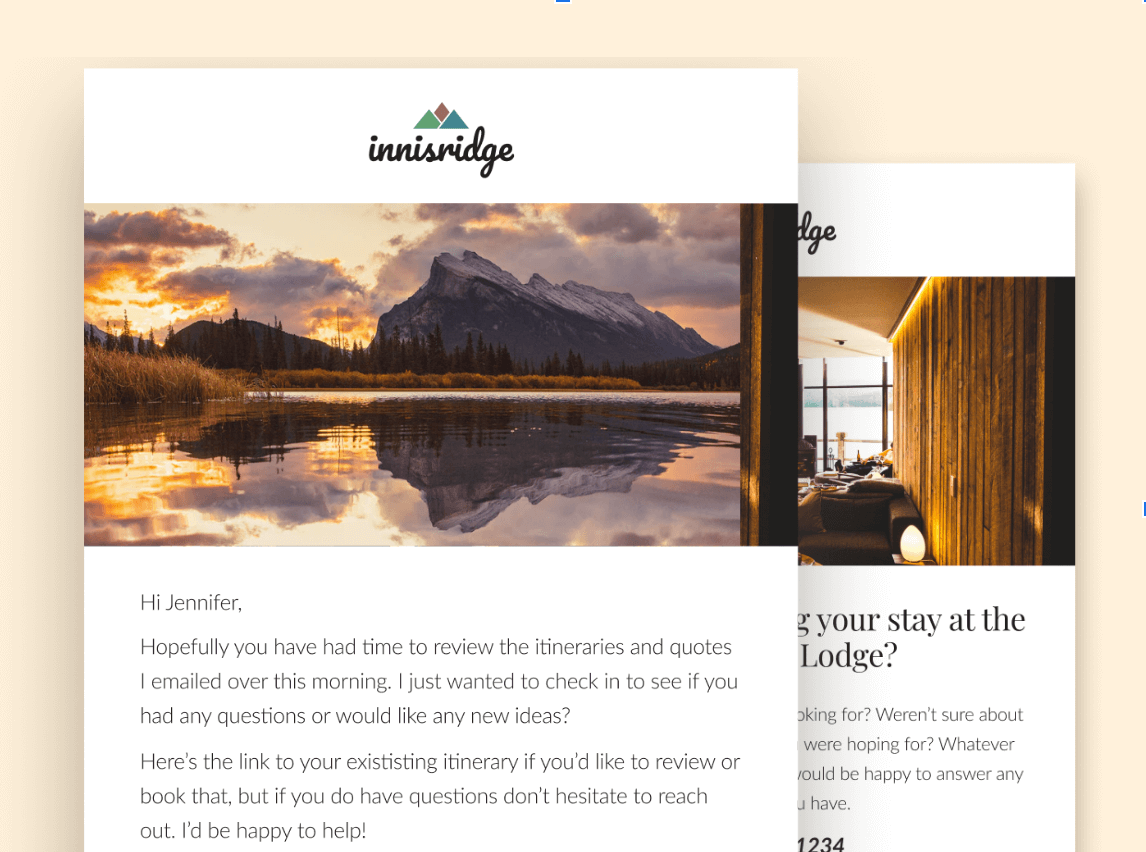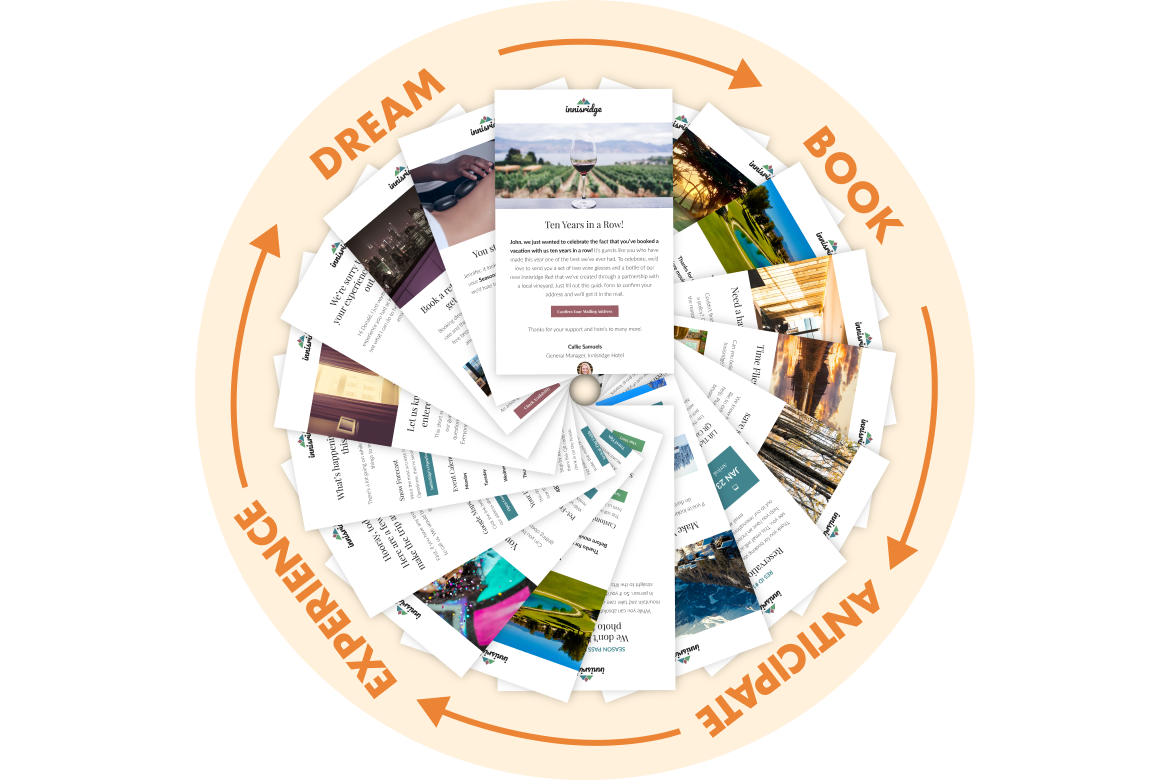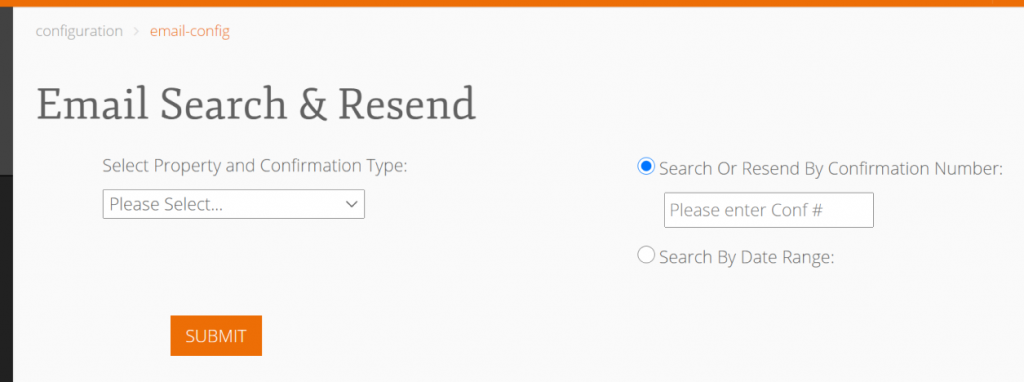Free Guide
Email marketing is one of the most robust marketing channels available to hotels. The ROI is incredible, the targeting is virtually impossible to beat versus other digital marketing channels like social media, and it allows hoteliers to truly connect what they know about a guest to the messages they use to connect with them in ways no other channel can. It’s why you’ll often find that hotel CRM platforms often tout their email capabilities as a core feature because they can connect guest profiles to the actual email campaigns that guest receives.
In this guide we’ll break down email marketing into three parts:
Let’s start by talking about why email is such a great fit for hotels.
To understand the power of email marketing for marketers in the hotel industry, we need to start with the technology behind email marketing. Unlike other channels, email is both delivered and tracked on a completely individual basis to each subscriber. Let’s break this down even further into each step of the process of a hotel using an email marketing tool to send a campaign to their guests.
First, it’s important to realize that when your hotel sends a marketing email to current or potential guests, every email that every guest receives is unique. On the most simple level, every email will contain a completely unique tracking pixel (a small, 1 pixel by 1 pixel image) that is 100% unique to the recipient who receives it.
When an inbox provider like Gmail or Outlook requests this image from the email marketing platform’s server, the server then knows exactly which guest opened the email and when. The same is true for links in that email. Each contains a special format that allows the hotel’s email marketing platform to know exactly who clicked which link and when which is rolled up to click-through rates. This also how email marketing platforms are able to measure not just open rate and click rate, but show you exactly which emails someone opened, the exact links that recipient clicked, and allow guests to unsubscribe with a single click.

This can be taken even further by using dynamic content to make every email completely custom for every recipient. For example, a hotel could send an email campaign that customizes the hero image and call to action (CTA) based on the guest being a VIP, family, business traveler, etc. Even subject lines are customized which means every subject line sent to every subscriber can be totally unique.
Email marketing as a channel has this ability to deliver one-to-one messages at a pricepoint and in a way no other channels can. It’s a big reason email marketing’s ROI over averages over $40 in revenue for every $1 spent for basic platforms and $100-$200 in revenue for every $1 spent for more powerful tools like Inntopia Marketing Cloud.
This level of individuality also opens the door for an incredible level of tracking in terms of performance metrics and guest behavior. For example, if you append a tracking code onto the end of a link, your web analytics platform may be configured to tell you the conversion rate for all the people who clicked that link and arrived on your website or booking engine. This is helpful, but it can’t tell you the behavior of specific people. It only works on the aggregate.
But because your hotel’s email marketing program knows not only overall click-through rates but exactly who clicked what and when, you can connect dots back from bookings made by that person to emails they received and did or did not open or click and see a level of marketing attribution – and confidence in those numbers – that is virtually impossible on any other platform. Not just metrics, but insights into engagement from individual guests.
For example, you can tell Facebook to show your ad to a specific list of people (even if that list if an audience based on an email list), but you don’t know exactly who saw the ad, who clicked, and thus have no way to know if the person who just booked a room saw and click on the ad or never saw it. And while Facebook will offer to measure that for you, it lacks the control of the attribution, visibility into who did what, and level of confidence of email. On the flip side, you can look at a guest who just booked and see exactly which emails they’ve opened, which links they’ve clicked, etc. to know where that booking came from.
Hotels have very unique guests and drivers behind each guest’s reasons for booking. Because email marketing can reach individual guests with personalized emails and then tell you exactly how many people booked as a result, email marketing is a tool that gives hotels to ability to generate incredible ROI. All of those factors also lead to the trend where more expensive hotel email marketing tools often generate many times the ROI of cheaper alternatives because the level of customization and attribution aligns so perfectly with the dynamics of hotel guest behavior and the need to fill specific dates in the calendar and understand which channels delivered those results.
This is an important point. Many hotels will use basic email marketing tools to save money not realizing that by saving $100/mo on fees they’re losing out on $10,000/mo in revenue that they could have captured with an email marketing platform built for their needs, data, and products.
Hotels are unique in that the property management and point of sale systems that hold their guest’s email data aren’t as neatly integrated into digital marketing platforms as a more mainstream tool like an ecommerce platform used by millions of people. As a result, hotels looking to capitalize on email marketing often misunderstand that even though their needs are simple, they may need a sophisticated tool.
There are three primary things a hotel needs to get started: a email marketing tool (often referred to as an ESP), an automated syncing of guest information to the ESP, and templates in which to place offers, images, and marketing copy.

Their email marketing platform may actually be part of the hotel CRM or CDP that they use (those lines have blurred over time as sending bulk emails has become more accessible).
What kind of email marketing software is best suited for hotels? It’s a common mistake for hoteliers to choose a platform based solely on price, overlooking features that could make a significant impact on their marketing results. Unlike e-commerce brands working with massive databases of millions, most hotels manage a more modest list—often just a few thousand to a few tens of thousands of contacts.
Hotels also operate within a different kind of customer lifecycle. Guests frequently book weeks or even months in advance, meaning there’s a long window between the time of purchase and the actual stay. This extended lead time creates ideal conditions for strategic, automated messaging. In particular, time-based automation triggered by booking dates, check-in, check-out, or seasonal events can be especially powerful in keeping guests engaged and driving upsells.
While advanced features like A/B testing are typically more useful when you’re dealing with very large lists, automation is where email marketing really proves its value for hotels. The right platform should not only support automated campaigns but make it easy to build and manage them around the rhythms of hotel guest behavior.
Before we move on, pay close attention an email platform’s features around deliverability; the practice of maintaining sender reputation and best practices to continue reaching the inbox. This is a topic that is easy to overlook until suddenly your performance is cut in half by getting on the wrong side of the deliverability spectrum. This is also true of privacy laws like CASL and GDPR. If you operate in markets with stricture privacy laws, ensure your email marketing software can account for these requirements.
Next, the hotel needs a way to establish integrations with and sync guest information from their property management system (PMS), point of sale (POS), spa, survey, marketing, or other systems into their email marketing tool. Ideally, they would be using a hotel CRM to do this that would import past guests, new customers, demographic information, and itinerary changes plus clean up duplicates, and build out guest profiles with other information and traits before syncing to the ESP.
For example, a hotel using a recency/frequency/monetary (RFM) model to group guests by their spending habits would want to have that as a trait that they could use to build email lists of guests, dynamically customize the contents of emails, and track email performance around. While yes, you can manually export emails from your PMS and manually upload them into your email tool, a hotel CRM or CDP tool that handles this automatically will save your team time, money, and allow you to be confident that automations are based on accurate, up-to-date booking behavior. And manually loading data makes it harder to launch automated campaigns that depend on real-time data or would miss last-minute bookings.
Next, you’ll need email templates. While these templates appear to use traditional HTML, email inboxes like Gmail and Outlook render HTML very differently than a web browser like Chrome or Safari, even if you’re viewing that inbox in a browser. Things like padding, background images, borders, margins, and other parts of the email layout all need to be built based on the rules and constraints of various systems. In other words, you need to either use a drag-and-drop tool that generates email-specific HTML for you or you need to work with a developer who is well-versed in email-specific HTML to ensure that your campaigns look exactly how you want them to look and reflect well on your brand.

I can’t tell you how many hotels we’ve worked with on email marketing strategy who tell us that their agency built their email templates for them, only to find that the agency wrote the HTML code for that template with standard HTML practices instead of email-specific HTML practices. In almost every case, the fastest solution is to build the hotel’s email templates over from scratch.
When considering your hotel’s email marketing strategy, it can be overwhelming to think about all the possibilities, types of emails, and ways you could use this channel not to mention domains, deliverability, tracking, and best practices. However, considering breaking down your strategy into three types of hotel email marketing campaigns and taking them in sequence.
This is what is traditionally called an “email newsletter” or “email blast” where you’re reaching out to a targeting portion of your hotel’s email marketing database. Start by brainstorming a cadence that you feel you can maintain. This may be weekly, twice a week, monthly, or something close to one of those. Businesses in the hotel industry are often fairly lean, so find something that fits your constraints even if that’s not as frequent as other hotels you compete with.
While your strategy may be nothing more than reaching out to your guests with information about deals and local events, ask yourself a few questions to see if there’s a more targeted strategy you can adopt.
For example, if your hotel’s occupancy the second week of May is pacing below average, the answers to that question might be as follows.
These recurring, manual sends allow you to adapt to changing needs and goals and send emails tailored to those needs to guests who are highly likely to act. They’re a perfect companion to other channels you might already be using for these sorts of messages like social and your website.
Sometimes called staycycle emails or similar variations, these are automated marketing emails that are fairly unique to the hotel industry and triggered in relation to bookings and are built around the customer journey. When there’s an opportunity to increase loyalty, revenue, or satisfaction, there’s usually a marketing automation to match.
For example, a hotel might send automated pre-arrival emails to guests between their booking date and check in that help them have all the information, upsells, special offers, or details they need to have an incredible trip. A hotel might then send on-property emails to offer service or remind guests of amenities. The hotel could then send post-stay emails with a survey to gather feedback, encourage them to leave reviews, and deliver enticing offers to encourage them to return. If they haven’t returned within a year another automated email could celebrate their booking anniversary and share a discount to get them to come back. And if they book again, automated emails can recognize or reward them for their loyalty to either compliment or replace their traditional loyalty program. Even just recognizing the day they under your database with a welcome email campaign can make a huge difference.

There are dozens of these emails that are perfect for hotels as they look to implement an email marketing automation program, but start simple and then commit to building a new automation on a recurrent basis. Turn on one automation each month, for example, and before long you’ll have a suite of automated email marketing campaigns that consistently generate hands-free loyalty and satisfaction. Some of these automated campaigns may only solve a small problem, but together they can add up to a significant increase in revenue and loyalty for your hotel.
Finally, you’ll want to consider how your transactional emails fit into the email marketing strategy of your hotel. This would include booking confirmation emails, cancellation emails, change emails, and resending all of these as needed. Some hotels get stuck manually resending emails without a tool to assist them which can take many hours a day. There are many ways to solve this problem, but ensure that you think through this problem before you choose an email marketing platform and, potentially, a hotel CRM or CDP. A tool that allows you to resend confirmation and cancellation emails with just a few clicks can be the difference between having time to do email marketing correctly and just keeping your team’s head above water.

It’s a big reason why we launched our Confirmations Dashboard so that resending a guest’s email could be done in less than 30 rather than tens of minutes like it can take for some teams. Hotel email marketing can be a powerful tool in your team’s marketing toolbox, but before committing to a tool ensure that you have all the pieces you need in terms of technology, data access, and automations to be sure you can deliver on your vision.
Done well, email marketing is incredibly effective for hotels. Email open rates are often some of the best in the marketing world and can deliver everything from a high-quality guest experience to highly relevant follow up messaging when things don’t go to plan. Successful email marketing relies on a thoughtful plan around everything from the email marketing system they use and how they integrate opt-in forms on the hotel website to the target audience they want to reach and the email subject lines each guest sees in their inbox.
Done well, your hotel’s email marketing efforts will yield incredible ROI even when done with a small team. And if you don’t have time or bandwidth? Look for an email marketing platform like Inntopia Marketing Cloud that comes with more hands-on support so you can offload as much of the strategy and implementation as possible without having to sacrifice other needs around your hotel or other marketing campaigns.